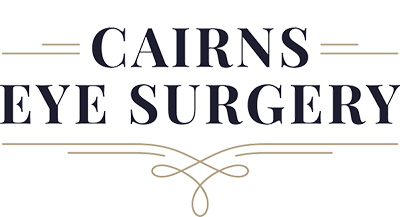CATARACT SURGERY
CATARACT SURGERY
(07) 4081 3000
Address
Cairns Clinic:
77 Woodward St, Edge Hill
Tablelands Clinic:
Atherton Hospital
Innisfail Clinic:
Innisfail Hospital
Mareeba Clinic:
Mareeba Hospital
Opening Hours
Monday – Friday: 8am - 5pm
Saturday-Sunday: Closed
Closed on Public Holidays
For after hours emergencies ring Cairns Hospital on (07) 4226 0000
Modern cataract surgery usually involves an incision in the cornea followed by fragmentation of the cloudy lens (cataract) by ultrasound (phacoemulsification) and removal by aspiration. The cataract is broken up with ultrasound, and the pieces are removed under suction. Once the lens has been removed, an artificial lens is inserted through the small incision. This lens unfolds inside the eye into the correct position. The small incision then seals itself or is closed with one or two sutures which are usually removed in the post-operative phase.
Pre-operative care
Pre-operative care for patients with cataract includes an assessment of your general health, medications, and allergies as these factors will affect the decision to proceed with surgery and the type of anaesthesia required. Prior to surgery, a scan will be performed to calculate the required power of the artificial lens to be inserted during the operation. The aim is to achieve clear vision for the desired distance. Glasses may be required.
Post-operative care
Following surgery, the eye will be shielded overnight. You will be reviewed the following day and the shield will be removed. The vision will initially be blurry but it should clear over the following days and continue to improve over the next month. New spectacles are prescribed at two months following the surgery, if required.
Once the shield has been removed, the eye may be left opened and sunglasses or other spectacles may be worn to protect the eye. The plastic eye shield should be worn at night for the first week following surgery to prevent any trauma to the eye. You should keep the eye clean and dry and take care when showering to avoid getting water in the eye. You should also avoid prolonged coughing, straining, bending, or heavy lifting for one week following surgery. Swimming should be avoided for at least one month following surgery. You may walk about and perform your usual daily activities after a few days as long as care and hygiene is maintained.
You will be required to use eye drops and, in some cases, tablets to control the intraocular pressure following surgery. The eye drops are usually required for one to two months following surgery.
The eye may feel irritated for the first week following surgery due to the small incisions and the surgery. Severe pain may indicate that the pressure in the eye is elevated or that an infection may be developing. A reduction in vision may suggest an infection, inflammation or development of retinal problems such as retinal detachment. These complications are however rare. Should any complications such as severe pain or loss of vision occur, it is advisable to contact Cairns Eye Surgery as soon as possible.
LOCATIONS
CAIRNS CLINIC: 77 Woodward St, Edge HillATHERTON CLINIC: Atherton HospitalINNISFAIL CLINIC: Innisfail HospitalMAREEBA CLINIC: Mareeba Hospital
© 2024
All Rights Reserved | Cairns Eye Surgery Site by WebZulu
